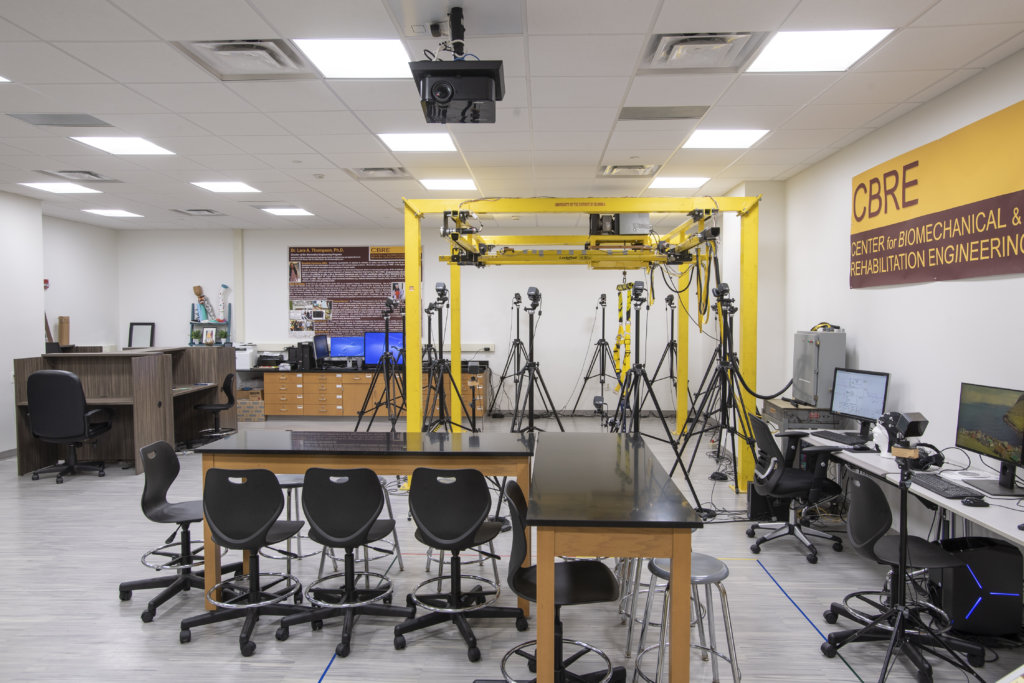Engineering is a broad field covering a wide range of applications and disciplines. With so many engineering programmes to choose from, however, it can feel hard to pick one.
For Josh Dillard, choosing the University of the District of Columbia (UDC) was easy. The reason for this is that its School of Engineering and Applied Sciences (SEAS) offers several bachelor’s programmes accredited by the Accreditation Board for Engineering and Technology (ABET). These include Biomedical Engineering, Civil Engineering, Computer Science, Electrical Engineering, and Mechanical Engineering. SEAS has also recently added two new bachelor degree programmes which are Computer Engineering and Cybersecurity.
All SEAS programmes rank highly in terms of quality and affordability. In 2020, it was ranked #1 in the 15 Best Affordable Mechanical Engineering Degree Programmes (Bachelor’s) 2020. Financial aid support students further, letting them make the most of their SEAS experience without being burdened by how to pay the bills.
Dillard, who pursued the Mechanical Engineering programme at SEAS, shares that the main reason he had his heart set on UDC was because of its affordable tuition fees. Though that was not the reason he ended up staying at UDC. “I chose to graduate from UDC because I just felt the tuition was really just in my ballpark. So I came for the tuition but I actually ended up staying for the mentorship,” he says.
“On my first day I remember feeling anxious and intimidated and this continued even to my first month in,” Dillard shares. Thankfully, he had mentors, especially his advisor from the Mechanical Engineering department, who constantly pushed and guided him throughout his time at UDC.

Source: University of the District of Columbia
Such close relationships are common at SEAS. At UDC, classes are small, allowing students to connect with their professors and peers. An average class has less than 15 students.
When asked about his most memorable course during his time at UDC, Dillard mentions “Introduction to Engineering” and “Creo,” a computer-aided design class. “I really enjoyed those classes because it was the first time I felt like an engineer, especially when I got to build a robot,” he says.
Like Dillard, most SEAS students learn by doing. In the Mechanical Engineering programme, for example, the fist and second years focus on strengthening math, science, and developing basic engineering skills. They then progress to core mechanical engineering courses and technical electives. They work on projects such as 3D Noise Modelling of an Urban Environment: Simulated and Measured Noise Characteristics of the University of the District of Columbia Campus, Role of Multiple Reflections in Identifying Street Canyons in Microscale Urban Spaces, and Breast Cancer Tissue Stiffness Assessment Using Transfer Learning Ultrasound Elastography: A Phantom Study.
Civil Engineering students work on projects such as: Development of a platform for Psychophysiological Driving Behavior Studies, Local Area Economic Development Forecasting, and Optimisation of site investigation considering spatial soil variability in slope engineering. Projects for Computer Science and Information Technology students include: Implementing and Evaluating a Virtualized Security Operations Centre, Intelligent Face Masks with E-Textiles, and Twitter Sentimental Analysis.
Every step of the way, these students are honing professionally-driven skills and competencies — which are supplemented by their university’s educational partnerships with Microsoft, Lockheed Martin, Cisco systems courses, and a mentoring programme with Amazon.
The result of small classes, mentoring, and close collaboration with faculty and other students? Job-ready graduates.

Source: University of the District of Columbia, Facebook
SEAS has an outstanding track record with placing students in permanent jobs and internships. These include placements at Applied Control Engineering, Inc., Beta Technologies, Boston Scientific, Eli Lilly and Company, Johns Hopkins Applied Physics Lab, Microsoft, Molex Inc., NASA, Naval Research (NREIP), National Institute of Standard and Technology (NIST), Oak Ridge National Lab, San Francisco International Airport, US Naval Research Lab and Warner Bros Technology
“I am currently a first year mechanical engineer at the Kansas City National Security Campus,” shares Dillard.
Research opportunities abound as well. At SEAS, it’s easy to gain exposure at some of the most cutting-edge research centres in the country: Centre for Biomechanical and Rehabilitation Engineering, Centre of Excellence for Acoustic and Seismic Sensing of Urban Environments, Centre of Excellence for Renewable Energy, NASA-MIRO: Centre for Advanced Manufacturing in Space Technology and Applied Research at UDC (CAM-STAR), NSF-CREST: Centre for Nanotechnology Research and Education, SEAS Research Centre, Additive Manufacturing Post Processing Partnership Consortium, and NIST-Professional Research Experience Programme.
From research centres within the school itself to federally funded research centres, SEAS has many undergraduate research opportunities. Students can be involved in paper publications and attend national and international conferences.
Life on campus is just as dynamic. Affiliated student clubs and organisations include American Society of Civil Engineers (ASCE), American Society of Heating, Refrigerating and Air-Conditioning Engineers (ASHRAE), American Society of Mechanical Engineers (ASME), Association of Computing Machinery (ACM), Biomedical Engineering Society (BMES), Institute of Electrical and Electronics Engineers (IEEE), National Society of Black Engineers (NSBE), and Robotics Club Society of Women Engineers (SWE).
What are you waiting for? Visit University of the District of Columbia’s website to find out more about the university or check out their campus through the virtual tour.
Follow University of the District of Columbia on Facebook, Twitter, LinkedIn, Instagram, Snapchat and YouTube










